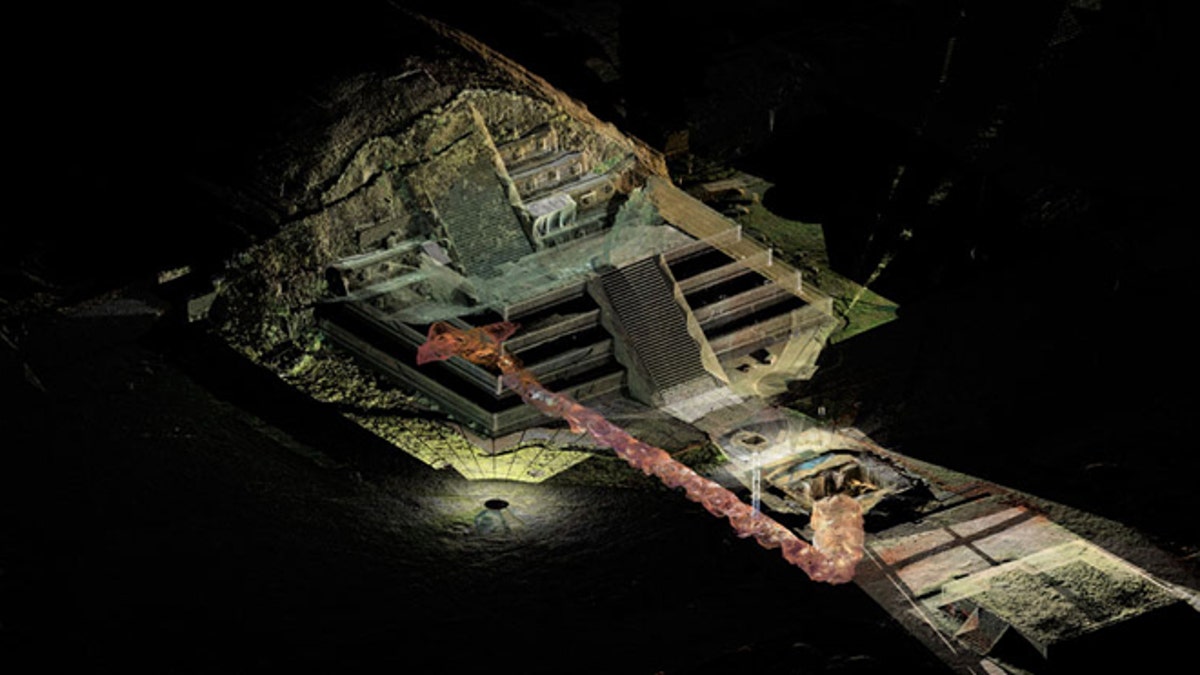
(The National Institute of Anthropology and History (INAH))
After six years of pain-staking archeological work inside of Teotihuacan's famed Pyramid of the Plumed Serpent in Mexico, researchers have come across a curious discovery that may bring them one step closer to finding the pre-Aztec pyramid’s royal tomb.
Beside the stone sculptures, fine jewelry and giant seashells, archeologist Sergio Gómez came across "large quantities" of liquid metal deep in the bowels of the temple complex at the end of a sacred tunnel sealed off to the world for nearly 1,800 years.
"It's something that completely surprised us," Gomez said, according to Reuters.
The discovery of the liquid metal has led some scientists to speculate that it marks part of the tomb of Teotihuacan's first ruler. Gomez says that the mercury may have been used to symbolize an underworld river or lake, but adds that this is just speculation as little is actually known about the society that inhabited the temple complex.
Annabeth Headrick, a professor at the University of Denver and the author of works on Teotihuacan and Mesoamerican art, added that reflective qualities of liquid mercury may have resembled "an underworld river, not that different from the river Styx," Headrick said, “if only in the concept that it’s the entrance to the supernatural world and the entrance to the underworld."
"Mirrors were considered a way to look into the supernatural world, they were a way to divine what might happen in the future," she said, according to the Guardian. "It could be a sort of river, albeit a pretty spectacular one."
The inhabitants of Teotihuacan were contemporaries of several ancient Maya cities, but unlike their breather farther south little is known about them and scientists don’t even have a name for the group.
Teotihuacan was a city of massive stone pyramids that was home to as many as 200,000 people and was the heart of an ancient empire that flourished between 100 and 700 A.D., but was abandoned long before the Aztecs came to power in the 14th century. Leaving no written record of their history, the society of Teotihuacan, or "abode of the gods" in the Aztec language of Nahuatl, is only known to be distinct from the Mayan civilization.
At its peak, Teotihuacan is believed to have been ruled by not one king, but a council of four lords, said Mexican archeologist Linda Manzanilla, pointing to the lack of one single royal palace or existence of kings in any of the city's numerous murals.
Work on the excavation of the temple has been a slow and arduous process slowed by humidity, mud and now the need for protective gear because of the liquid mercury.
Still the discovery of the liquid metal has bolstered archaeologist’s hopes that they are close to finding a royal tomb.
"But it's still very uncertain, and that is what keeps everybody in suspense," George Cowgill, a U.S. archeologist who has worked for over four decades at Teotihuacan.




















